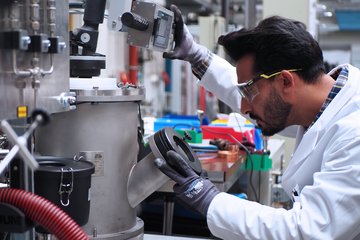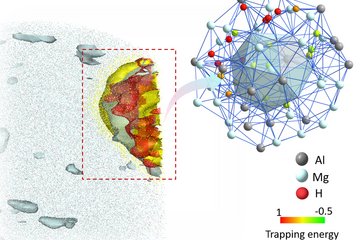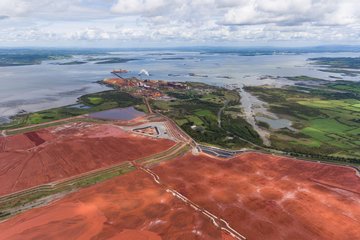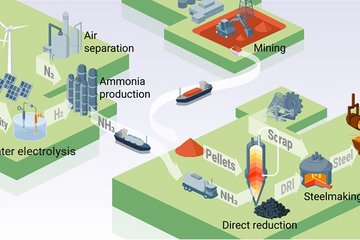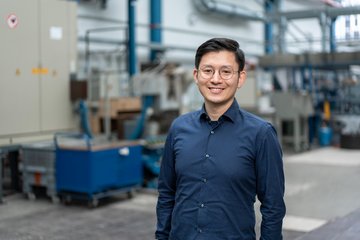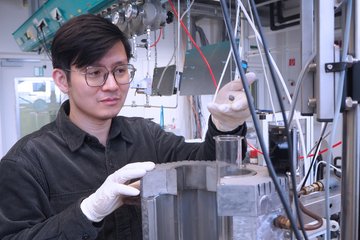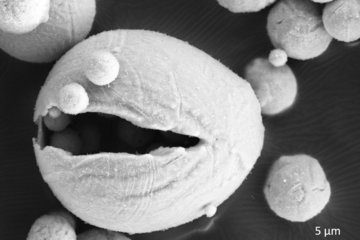Alle Typen
881.
Zeitschriftenartikel
Don’t trust your simulation - Computational materials science on its way to maturity? Advanced Engineering Materials 4 (5), S. 255 - 267 (2002)
882.
Zeitschriftenartikel
Theory of orientation gradients in plastically strained crystals. Acta Materialia 50 (2), S. 421 - 440 (2002)
883.
Zeitschriftenartikel
Abnormal grain growth in silicon steel. Proc. ICOTOM 13, S. 949 - 954 (2002)
884.
Zeitschriftenartikel
Orientation dependence of recrystallization in aluminium. Proc. ICOTOM 13, S. 773 - 778 (2002)
885.
Zeitschriftenartikel
Finite element simulation of grain interaction and orientation fragmentation during plastic deformation of BCC metals. Proc. ICOTOM 13, S. 371 - 376 (2002)
886.
Zeitschriftenartikel
Cellular automata in materials science with particular reference to recrystallization simulation. Annual Review of Materials Research 32, S. 53 - 76 (2002)
887.
Zeitschriftenartikel
Challenges in computational materials science. Advanced Materials 14, S. 639 - 650 (2002)
888.
Zeitschriftenartikel
Texture component crystal plasticity finite element method for scalable large strain anisotropy simulations. Proc. ICOTOM 13, S. 257 - 262 (2002)
889.
Zeitschriftenartikel
Concepts for integrating plastic anisotropy into metal forming simulations. Advanced Engineering Materials 4, S. 169 - 180 (2002)
890.
Zeitschriftenartikel
Texture component crystal plasticity finite element method for physically-based metal forming simulations including texture update. Proc. 8th Int. Conf. on Aluminium Alloys, S. 31 - 36 (2002)
891.
Zeitschriftenartikel
Surface micromechanics of polymer coated aluminium sheets during plastic deformation. Advanced Engineering Materials 4, S. 859 - 864 (2002)
892.
Zeitschriftenartikel
On the dependence of in-grain subdivision and deformation texture of aluminium on grain interaction. Acta Materialia 50, S. 4379 - 4394 (2002)
893.
Zeitschriftenartikel
Theory of orientation gradients. (Proc. ICOTOM 13), S. 275 - 280 (2002)
894.
Zeitschriftenartikel
Experimental investigation of plastic grain interaction. Materials Science and Engineering A 336, S. 81 - 87 (2002)
895.
Zeitschriftenartikel
Influence of grain neighborhood on FCC texture simulation. Proc. ICOTOM 13, S. 281 - 286 (2002)
896.
Zeitschriftenartikel
Micromechanical and macromechanical effects in grain scale polycrystal plasticity experimentation and simulation. Acta Materialia 49 (17), S. 3433 - 3441 (2001)
897.
Zeitschriftenartikel
Optimizing continuous annealing of IF steels for improving their deep drawability. Metallurgical and Materials Transactions A 32, S. 1989 - 1995 (2001)
898.
Zeitschriftenartikel
A hybrid model for mesoscopic simulation of recrystallization. Computational Materials Science 21, S. 69 - 78 (2001)
899.
Zeitschriftenartikel
Introduction of a texture component crystal plasticity finite element method for anisotropy simulations. Advanced Engineering Materials 3, S. 984 - 990 (2001)
900.
Zeitschriftenartikel
Work hardening in heterogeneous alloys - A microstructural approach based on three internal state variables. Acta Materialia 48 (17), S. 4181 - 4189 (2000)
